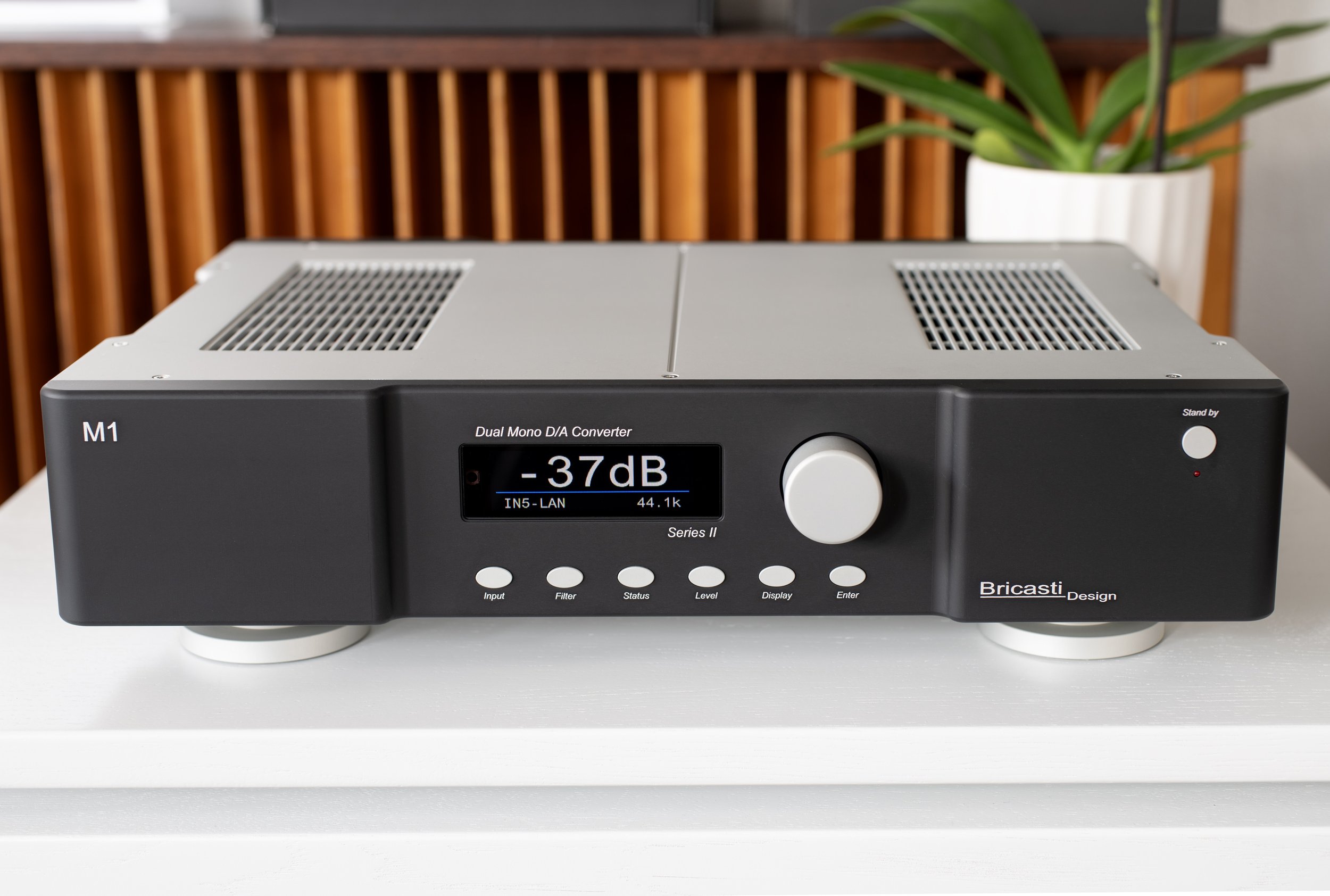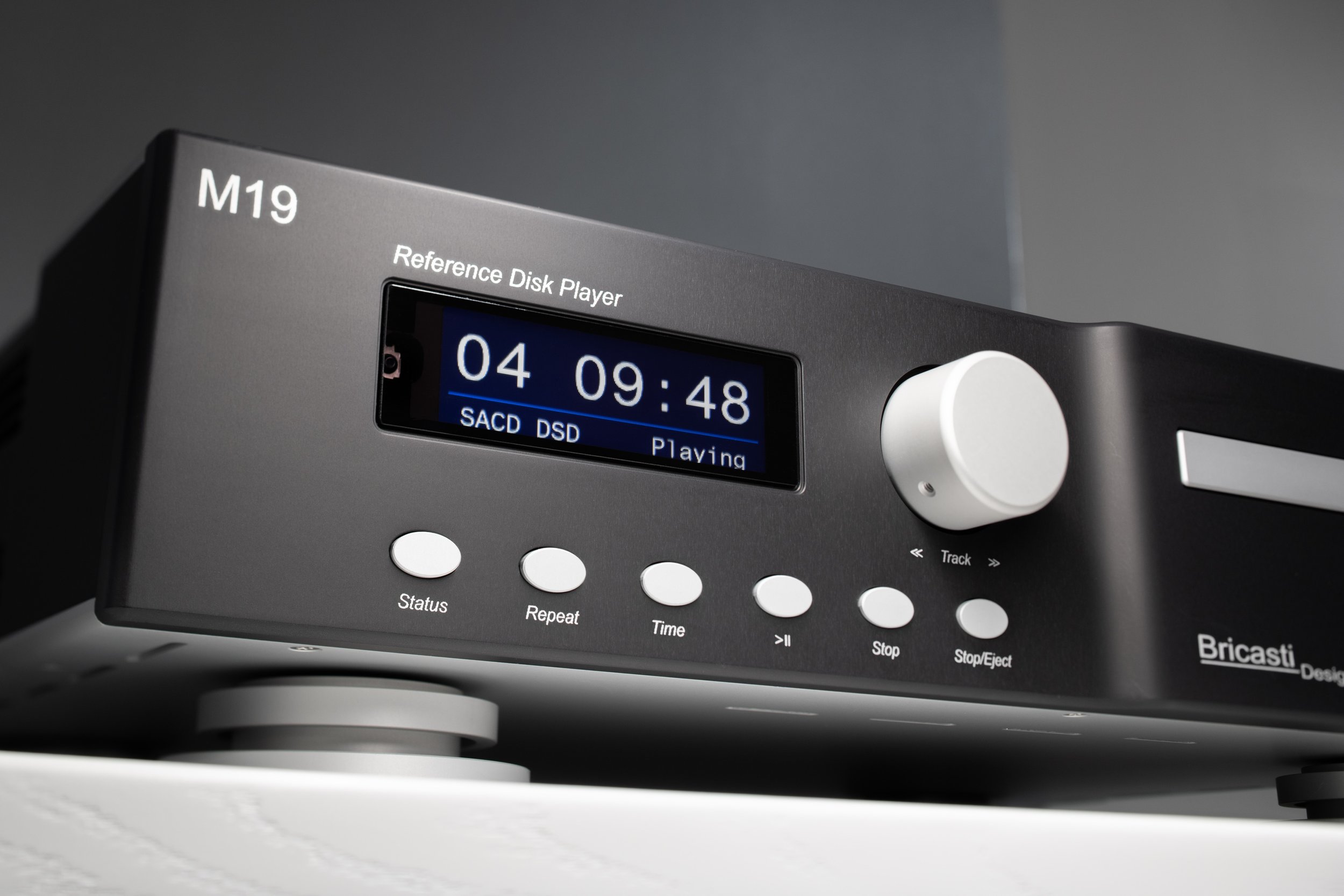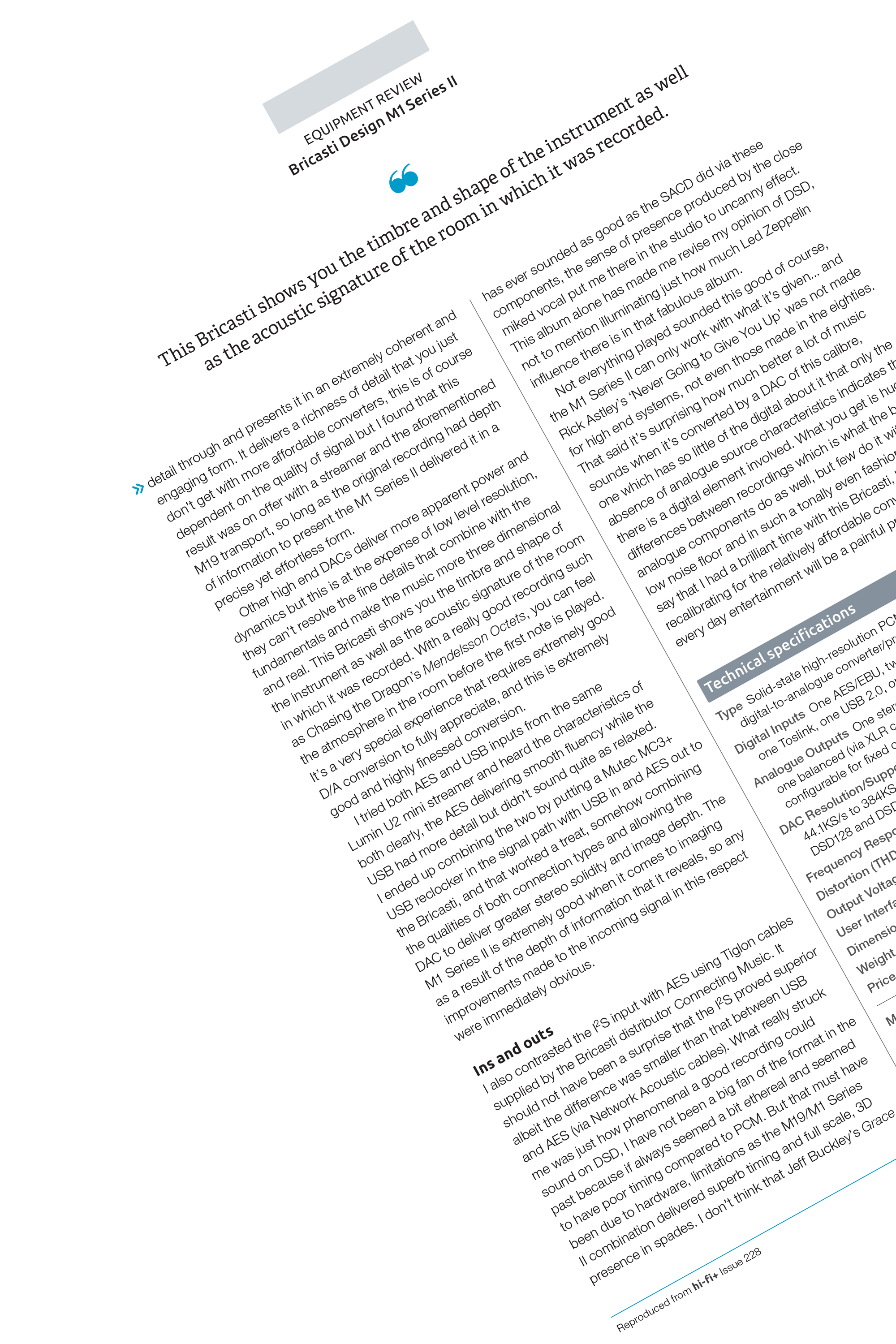
M1 SERIES II CONVERTER
hi-fi+ Issue 228: February 2024

Bricasti Design M1 Series II DAC BY HIFI+
The name sounds Italian but Bricasti’s New England origin is reflected in the restrained nature of the aesthetics on the company’s range of audio electronics for the home and studio. Bricasti was founded by Brian Zolner and Casey Dowdell, they combined their Christian names to come up with the brand and that’s the way it has stayed throughout its 20 year history. Both men worked with Lexicon and Madrigal labs when the latter was making Mark Levinson products, one suspects that this is where they got their ideas for styling.
Today Bricasti makes a range of digital and analogue electronics that has recently been joined by the M19 SACD transport, what we have here is the latest iteration of the M1 DAC, the component that put Bricasti on the audio map.
The M1 Series II looks like a fairly simple digital to analogue converter yet both the display on the front and the back panel reveal that it is more complex than it appears, this DAC is a streamer and a digital preamplifier as well as a very capable converter. You will notice the large feet underneath its precisely machined chassis, and if you pick it up you might notice that they are not solid but two part isolation feet made by Stillpoints. This gives a small indication of the attention to detail that Bricasti have brought to this component, a DAC that has point-to-point wiring between multiple circuit boards and dedicated linear power supplies for each channel.
This fact indicating that the M1 Series II is a dual-mono converter with totally separate circuitry for each channel, the placement of analogue outputs at the flanks of the back panel reveal this internal separation almost as effectively as a picture of the internal layout of the DAC.
DUAL CORE
The heart of the M1 Series II is the MDx digital processor, this contains the USB receiver, master clock and D/A converter chips alongside dual core Analog Devices DSP processors which handle upsampling, filter options and essentially runs all of the functions provided by this DAC.
This includes converting DoP to DSD, clock synchronisation and all of the work that Bricasti put into reducing jitter and distortion. Connectivity is a strongpoint on this DAC, it has the usual array of digital inputs including coaxial S/PDIF on RCA and BNC sockets, AES, Toslink and USB. On top of this is an RJ45 socket that’s marked Network for streaming purposes but which has a secondary function as an I2S input, this is for use with the M19 transport which has a matching output. I’ve not come across I2S via this ethernet connector before but as this is a proprietary signal transmission system Bricasti had the option to use any connector they liked. I2S is generally only used for internal signal routing within digital components but has become quite a fashionable way of connecting sources and DACs, albeit these have to be from a single manufacturer as there is no standard for I2S connections.
The M1 Series II has a compact metal remote control with buttons marked level, input, filter and status plus up down keys that allow the user to scroll through the options for each. The display shows the filter or input selected, or the volume level when this DAC is connected directly to a power amp via its single ended or balanced analogue outputs. The same function buttons are on the front of the machine but I didn’t get much use out of those, albeit the rotary saw some action when the Bricasti was controlling volume, it’s a smooth turner as you might expect.

EQUIPMENT REVIEW
Bricasti Design M1 Series II
“
The display shows the filter or input selected, or the volume level when the DAC is connected directly to a power amp.

DSD FILTERS
This DAC is unusual in having filter options for both DSD and PCM signals as the M19 can provide a native DSD signal over the I2S connection and streaming sources can deliver DoP (DSD over PCM). There are three DSD filter settings which offer different degrees pf noise attenuation, filter zero is a pass through, filter one has a gentle roll off between 32k and 64k, while filter two starts at 28k and reaches a stop band at 48k. There are 15 PCM filters split into nine linear phase and six minimum phase options which you can use on the fly albeit there’s a short silence between each.
I ignored these to begin with but regretted doing so as soon as I discovered the quality of timing via the minimum phase filters, these don’t have the purity of tone produced by the linear phase options but the sense of engagement is greatly enhanced. There are clear tonal and image related differences between the various settings and it’s interesting to try different ones with different types of music. I’m told that the linear phase filters work well with some speakers and presumably genres of music, the important thing is that you have the choice and can compare the options from your sofa.
FINE TOUCH
The Bricasti M1 Series II is one of the most natural and delicate sounding DACs I have had the pleasure of using, it has an analogue like transparency that lets oodles of detail through and presents it in an extremely coherent and engaging form. It delivers a richness of detail that you just don’t get with more affordable converters, this is of course dependent on the quality of signal but I found that this result was on offer with a streamer and the aforementioned M19 transport, so long as the original recording had depth of information to present the M1 Series II delivered it in a precise yet effortless form.
Other high end DACs deliver more apparent power and dynamics but this is at the expense of low level resolution, they can’t resolve the fine details that combine with the fundamentals and make the music more three dimensional and real. This Bricasti shows you the timbre and shape of the instrument as well as the acoustic signature of the room in which it was recorded. With a really good recording such as Chasing the Dragon’s Mendelsson Octets, you can feel the atmosphere in the room before the first note is played. It’s a very special experience that requires extremely good D/A conversion to fully appreciate, and this is extremely good and highly finessed conversion.
I tried both AES and USB inputs from the same Lumin U2 mini streamer and heard the characteristics of both clearly, the AES delivering smooth fluency while the USB had more detail but didn’t sound quite as relaxed. I ended up combining the two by putting a Mutec MC3+ USB reclocker in the signal path with USB in and AES out to the Bricasti, and that worked a treat, somehow combining the qualities of both connection types and allowing the DAC to deliver greater stereo solidity and image depth. The M1 Series II is extremely good when it comes to imaging as a result of the depth of information that it reveals, so any improvements made to the incoming signal in this respect were immediately obvious.

EQUIPMENT REVIEW
Bricasti Design M1 Series II
“
This Bricasti shows you the timbre and shape of the instrument as well as the acoustic signature of the room in which it was recorded.
INS AND OUTS
I also contrasted the I2S input with AES using Tiglon cables supplied by the Bricasti distributor Connecting Music. It should not have been a surprise that the I2S proved superior albeit the difference was smaller than that between USB and AES (via Network Acoustic cables). What really struck me was just how phenomenal a good recording could sound on DSD, I have not been a big fan of the format in the past because if always seemed a bit ethereal and seemed to have poor timing compared to PCM. But that must have been due to hardware, limitations as the M19/M1 Series II combination delivered superb timing and full scale, 3D presence in spades. I don’t think that Jeff Buckley’s Grace has ever sounded as good as the SACD did via these components, the sense of presence produced by the close miked vocal put me there in the studio to uncanny effect.
This album alone has made me revise my opinion of DSD, not to mention illuminating just how much Led Zeppelin influence there is in that fabulous album.
Not everything played sounded this good of course, the M1 Series II can only work with what it’s given... and Rick Astley’s ‘Never Going to Give You Up’ was not made for high end systems, not even those made in the eighties. That said it’s surprising how much better a lot of music sounds when it’s converted by a DAC of this calibre, one which has so little of the digital about it that only the absence of analogue source characteristics indicates that there is a digital element involved. What you get is huge differences between recordings which is what the best analogue components do as well, but few do it with such a low noise floor and in such a tonally even fashion.
I have to say that I had a brilliant time with this Bricasti, but fear that recalibrating for the relatively affordable converter that is my every day entertainment will be a painful process.
Jason Kennedy - HIFI+ MAGAZINE

WANT TO READ
SOME MORE?
Hi-fi deluxe:
BRICASTI
M19, M1S2, M20 AND M25













